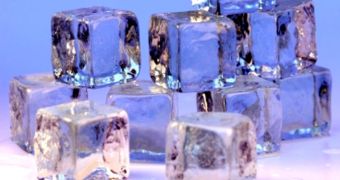Just when scientists thought there is little to discover when it comes to studying water, experts at the Massachusetts Institute of Technology (MIT) come up with a new discovery, which concerns the existence of basic physical property that is shared by liquids when they change temperature.
The finding, that the international scientific community received with some surprise, and which has already sparked some debates among academics, shows a new property that apparently affects water and other commonly-used liquids.
According to the the research team, it would appear that this property can only be observed when the temperature of certain liquids changes. It becomes visible as liquids near a point called the glass transition temperature (GTT), where their resistance to flow become very large.
But the MIT team able to observe another threshold in the transformations liquids suffer, which they dubbed the dynamic crossover temperature (DCT). According to MIT professor Sow-Hsin Chen, this is an entirely-different transition point.
It can apparently be found at temperatures about 20 to 30 percent higher than those of the GTT, and the team believes that the new threshold may be just as important for physics as the other one.
At the DCT limit, the value of viscosity for a large array of liquids is universal. The class of substances that is affected is that of glass-forming liquids, which includes ammonia, benzene, and water.
“All the transport properties of the liquid state change drastically [at the DCT]. Nobody realized this universal property of liquids before,” explains Chen, who is an MIT professor emeritus of nuclear science and engineering,
University of Messina physics professor Francesco Mallamace, four of his graduate students, and Boston University physics professor Eugene Stanley also contributed to the investigation.
The team published details of its discovery in the December 28, 2010 issue of the esteemed journal Proceedings of the National Academy of Sciences (PNAS). Chen writes that it's still too soon to ponder on the possible applications the work may have.
“We can only speculate, [because] this is so new that real practical applications haven’t really surfaced,” he explains. The expert does believe that materials such as concrete could be improved following the new discovery.
Funding for the investigation was provided by the Research Programs of National Interest, in Italy, and by the National Science Foundation and the Department of Energy, in the US.

 14 DAY TRIAL //
14 DAY TRIAL //